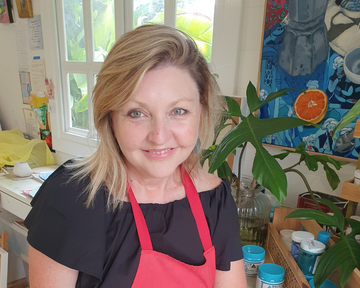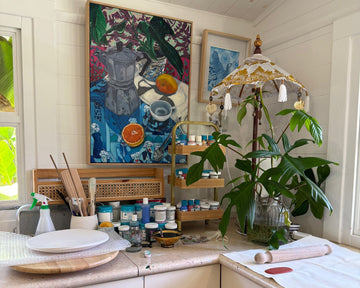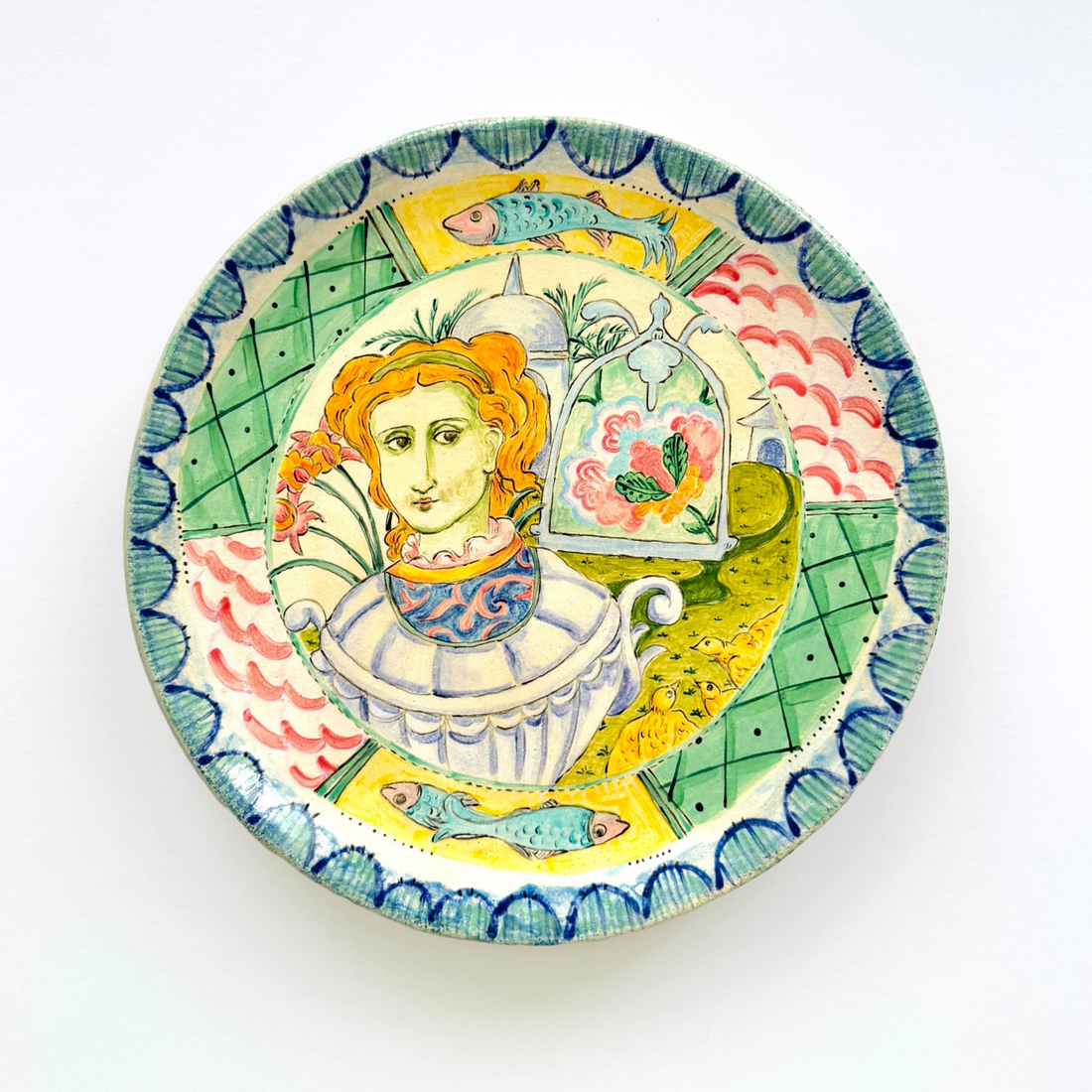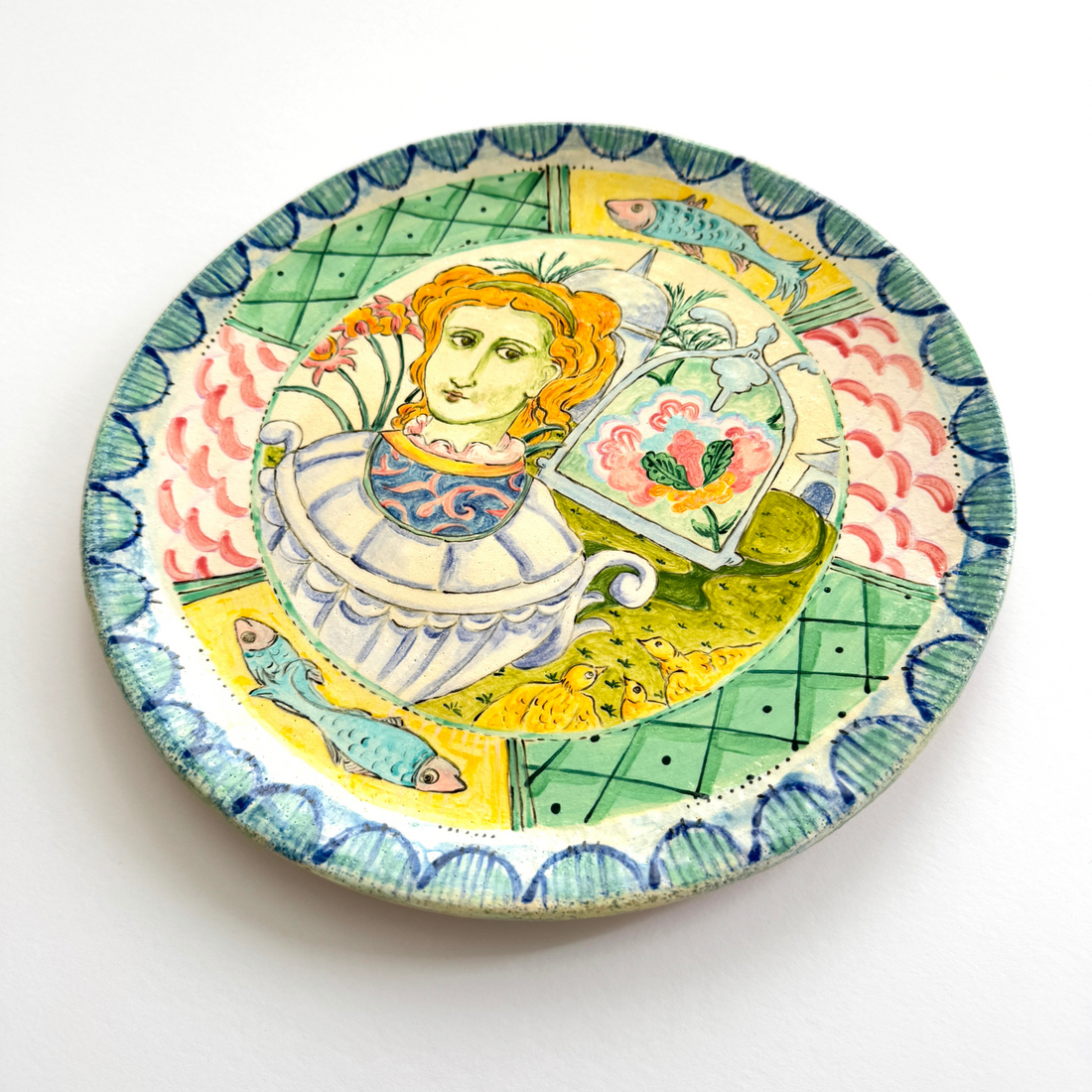Whimsy and folly, esoteric and syncretic religious imagery are all there in my work.

Q. Tell us about your background. How long have you been making art?
Like many others, I’ve been making art since I was very young. There was always a bit of paper or some type of exercise book lying around that was covered in my drawings, most likely the drawings were of the usual awkward and clichéd type.
I went to Art College straight after my HSC and was not the most disciplined of students. I eventually had a serious talk with myself and returned to study Visual Arts and Education at university and began my career as a Visual Arts teacher in 1992. It didn't take too long for the job to take over and my own practice soon took a back seat.
An eventual move to part time teaching and attending an art workshop in Bali in 2019 was the catalyst for a return to my own practice. At the end of 2024, I said farewell to teaching and am now working on my art full time.

Q. What inspires your art?
My paintings are quite different to my ceramics but a constant in both forms is the presence of subjective colour and decorative pattern, often inspired by the things I’ve been drawn to and collected while travelling overseas.
I’m interested in Jung’s idea of the collective unconscious and how certain images and symbols repeatedly appear across different cultures; tropes or recurring motifs. Whimsy and folly, the imagined, esoteric and syncretic religious imagery, and historical references to ceramic dishware are all there in my work.
I’m inspired by narrative and imagery that suggest an interchange of cultures, resulting in a decorative pastiche.
Q. Could you describe the process of creating your ceramics?
Each of my pieces starts as a slab form, some from the slab roller and some rolled by hand. I use shallow dishes and plates sourced from op shops as moulds for the forms while other pieces are shaped purely by hand. I like the quirkiness that the recycled moulds provide as it suits the whimsy of the images I paint on them. I decorate my earthenware pieces with underglaze at the greenware stage, having gently sanded them once leather dry.
I lightly draw a basic image with pencil onto the clay, and as one section of the drawing emerges, that organically leads to another. I sometimes use reference images stored on my phone to give my mind a bit of a prompt during the process. Next is the painting of my design with the underglazes. The pieces are then carefully transported to either a local pottery or a friend's kiln to be bisqued.
After bisque there is the gloss glaze firing stage where you find out if you are in the favour of the kiln goddesses or not. Sometimes I'm not.
I don’t plan my design beforehand; I sit with the shape in front of me and then an image will start to arise in my mind, drawn from all those things that inspire me.
Q. Share a comment or description someone shared of your work that really rang true for you.
To quote from the individual “delightfully odd…combining elements of history, mythology, religion and the mystic ... really lean into the weird stuff”.
I think they nailed it.
Q. Tell us what’s next for you.
In regards to my ceramics I’ve started exploring some different clay bodies and approaches towards surface design and will also move into hand built vessels in addition to my flatware. This year is really about enhancing my skills and knowledge while gaining confidence in my artistic practice.
Q. Share a recent highlight of your artistic practice with us.
Ah, that’s so hard as I’ve had some very special highlights in 2024 and the beginning of this year- it's a bit like leaving someone out of a Logie Speech - anyway bad jokes aside- I would have to say it was being selected as one of the exhibiting artists for the 2024 Inverell Contemporary. I had no idea of the calibre of the other artists that were also applying and then exhibiting and I was blown out of the water to be selected. The exhibition was an extremely affirming experience for my art practice and it has since led to other wonderful opportunities and experiences.























